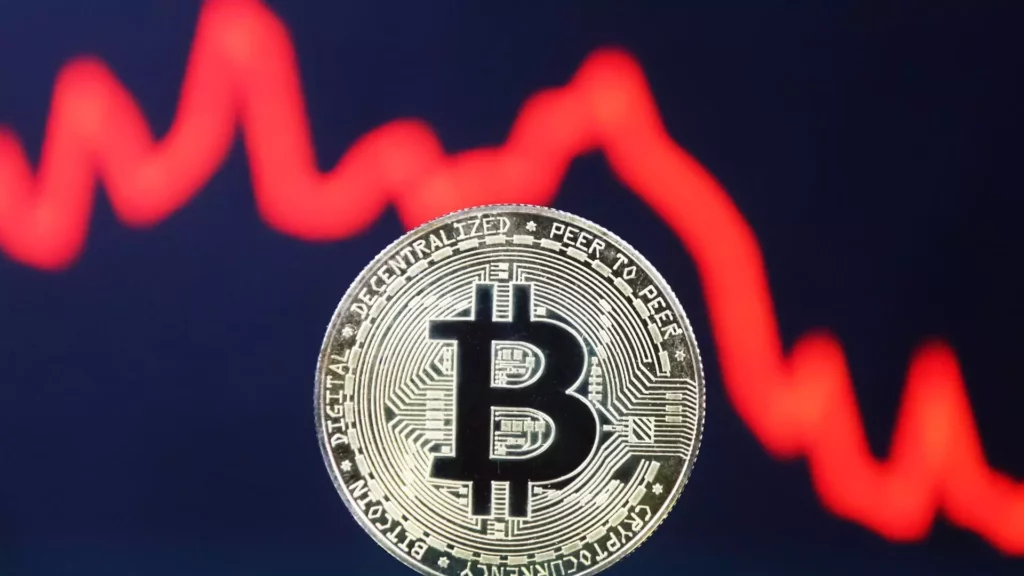In recent weeks, the cryptocurrency market appeared to be on an unstoppable ascent, fuelled by institutional interest and a growing acceptance among mainstream investors. Bitcoin, often heralded as the digital gold, reached breathtaking heights—peaking near $125,000—creating an atmosphere of complacency among many traders. This herd mentality, cloaked in optimism, masked the inherent volatility and susceptibility to macroeconomic shocks. The market’s resilience seemed almost inflated, with many investors dismissing warning signs that a correction was overdue. But every bubble is built on a foundation of overconfidence, and the recent dive starkly exposed this flaw.
The sharp decline wasn’t an isolated incident but rather a symptom of systemic fragility. As markets pushed higher, the underlying belief that crypto assets could indefinitely defy traditional economic pressures created an environment ripe for a sudden reversal. Such misplaced faith in endless upward momentum is a classic pitfall, leading to over-leverage and exaggerated liquidation cascades once the tide turns.
Macro Turbulence Meets Crypto Overreach
The trigger for this downturn was rooted in macroeconomic anxieties—namely, the unexpectedly high inflation figures announced in July. These numbers prompted heightened concerns over the Federal Reserve’s intentions regarding interest rate hikes. For months, crypto enthusiasts banked on the notion that institutional support and policy leniency would propel prices even higher. However, when inflation data challenged this narrative, confidence eroded rapidly.
Investors, spooked by the prospect of tighter monetary policy, hurried to unwind positions, leading to over $500 million in forced liquidations over a single day. Bitcoin, which earlier soared past the $124,000 mark, tumbled below $115,000, revealing how fragile bullish enthusiasm was. Meanwhile, Ether faced similar pressures, sliding over 4%. It became evident that the exuberance surrounding crypto’s recent institutional embrace was overly optimistic, ignoring the critical influence of macroeconomic fundamentals.
This chain of events underscores the peril of relying on macro trends as an implicit guarantee of future gains. Cryptocurrency markets are often driven by sentiment, but they are equally sensitive to macroeconomic signals—particularly inflation and interest rate expectations—that have historically dictated traditional markets. The disconnect between this reality and the crypto bubble’s confidence proved to be a dangerous illusion.
Liquidity Crunch and Herd Mentality
The cascading sell-offs weren’t merely driven by macro factors but also by the mechanics within the crypto trading environment. As prices declined, traders who had borrowed funds—leveraged long positions—faced margin calls, forcing them to liquidate holdings at the worst possible moments. Over 131,000 traders liquidated their positions in just 24 hours, with losses surpassing half a billion dollars. This mass liquidation sent shockwaves through the market, further depressing prices and creating a vicious cycle.
This phenomenon highlights the perilous nature of leverage, especially when markets are driven by speculative fervor rather than fundamentals. It became clear that many retail and institutional traders failed to account for the risks of holding inflated long positions amid shifting macro signals. Their overconfidence in the market’s resilience turned into panic selling when the first signs of trouble emerged.
Moreover, the market’s narrative was compounded by the comments from government officials, notably Treasury Secretary Scott Bessent. His statement about the federal government’s planned disposition of seized bitcoin eroded a layer of speculative optimism and added political uncertainty. Crypto markets, often influenced by policy and regulation, proved especially vulnerable to these uncertainties, underscoring how fragile the supposed unity of support for crypto assets truly is.
Broader Implications: From Overconfidence to Realistic Expectations
The recent crypto decline should serve as a stern lesson about the dangers of overestimating the resilience of digital assets. The prolonged hype had lulled many into a false sense of security, equating soaring prices with intrinsic value rather than speculative mania. As the market corrects, it becomes evident that the foundation for such valuations was more fragile than it appeared.
While some defenders argue that pullbacks are healthy cyclical adjustments, they overlook the fact that market overconfidence often leads to severe corrections, especially once macroeconomic conditions turn adverse. The false narrative that crypto assets are immune to traditional economic forces is being dismantled, revealing the need for more pragmatic risk management.
Furthermore, the recent influx into ETFs, which temporarily cushioned the blow, reflects a paradoxical scenario. Institutional investors and corporate entities continue to accumulate in record volumes, seemingly betting on a future rebound. Yet, their confidence may be misplaced, given the fundamental macroeconomic challenges that threaten to undermine this optimism. Crypto’s ascent has always been intertwined with sentiment and speculative behavior, making it inherently vulnerable to sharp reversals once external shocks hit.
This episode should prompt a shift towards a more cautious approach, emphasizing fundamentals over hype. Digital assets are not detached from global economic realities; rather, their value is increasingly intertwined with macroeconomic stability, regulatory clarity, and sound fiscal policies. Overconfidence, especially in a market driven by technological optimism, is a shortsighted strategy that can quickly turn into costly folly. Only by acknowledging these risks and integrating a centrist, pragmatic outlook can investors avoid the scars of another inevitable correction.









Leave a Reply